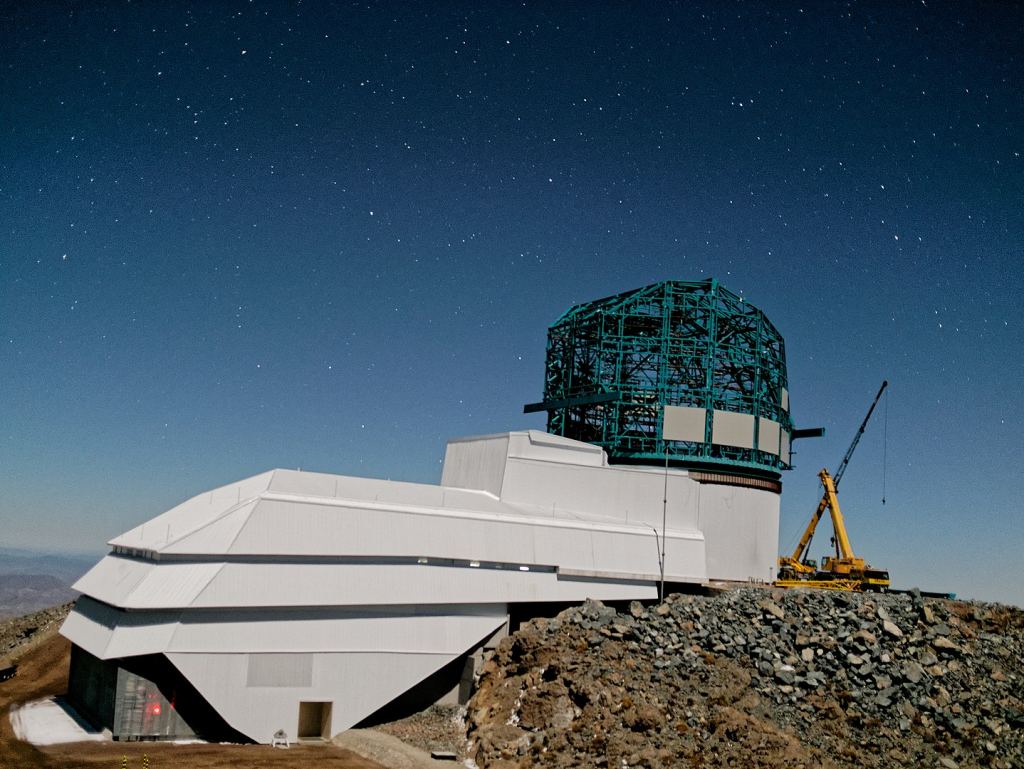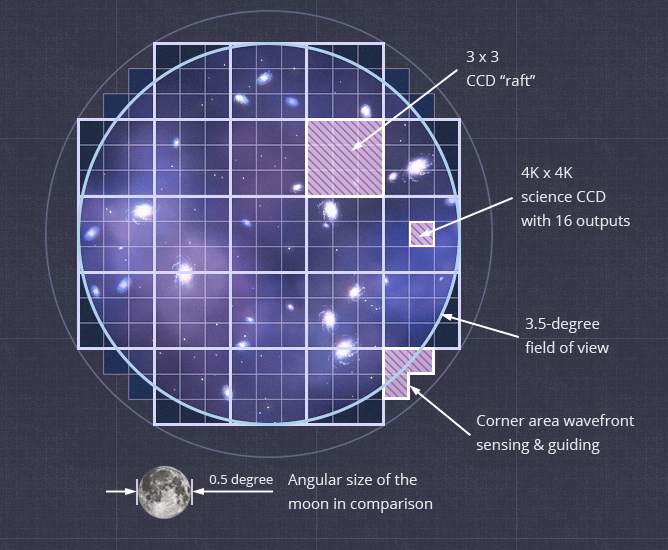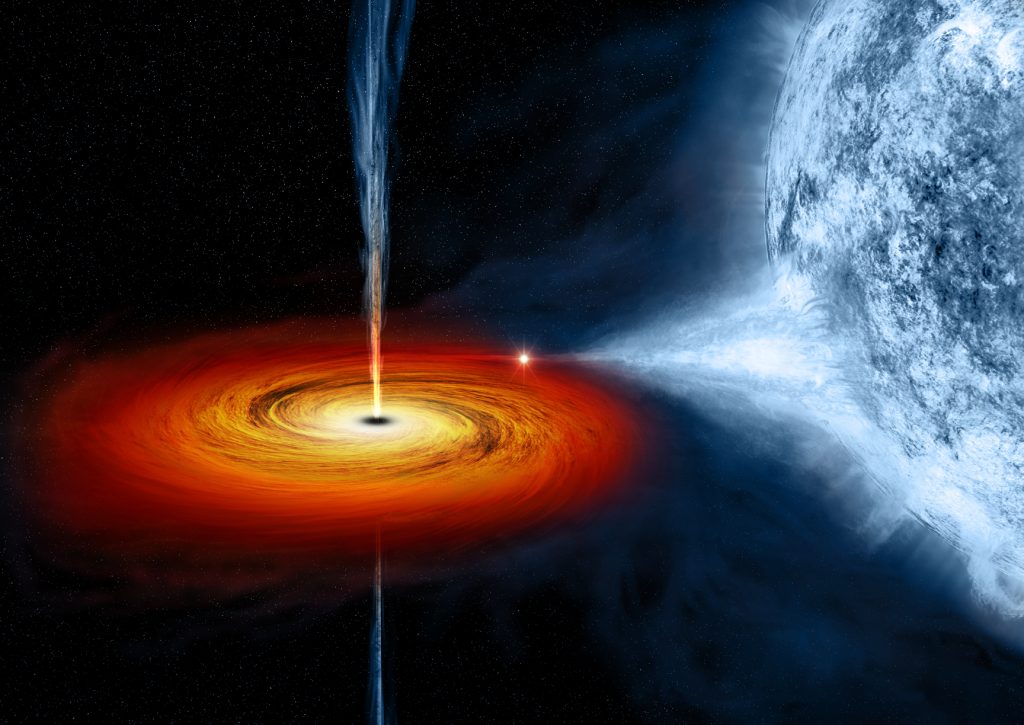A comet-eating black hole the size of a planet? It’s possible. And if there’s one out there in the distant Solar System, a pair of researchers think they know how to find it.
If they do, we might finally put the Planet 9 issue to rest.
The researchers are Dr. Avi Loeb, a Professor of Science at Harvard, and Amir Siraj, a Harvard undergraduate student. The paper outlining their thinking is titled “Searching for Black Holes in the Outer Solar System with LSST.” It’s been accepted by The Astrophysical Journal Letters.
Out beyond the orbit of Neptune, a cluster of Kuiper Belt Objects (KBOs) is shepherded together gravitationally by some body with enough mass to do so. One of the explanations for this is the Planet Nine hypothesis. But finding that planet is a near-impossible task, and its existence remains hypothetical.

Some researchers have put forth other explanations for the cluster of Kuiper Belt Objects with their unusual orbits. A disc of icy material was one explanation. Another study suggested the collective mass of the KBOs themselves was responsible.
But another potential explanation is emerging.
In their new paper, the pair of researchers suggest that a primordial black hole could be lurking the region.
We’re accustomed to hearing about stellar black holes. They’re the end result of a massive star reaching the end of its life and collapsing gravitationally. We’re also used to hearing about the supermassive black holes (SMBH) that live at the center of galaxies like ours. These behemoths can be billions of times more massive than the Sun, almost inconceivably massive.
But primordial black holes are much smaller. They, hypothetically, formed after the Big Bang, due to density fluctuations. They formed without a progenitor star of any kind.
“…Planet Nine could be a grapefruit-sized black hole with a mass of five to ten times that of the Earth.”
Amir Siraj, Co-Author, Harvard Undergrad
Loeb and Siraj aren’t the first to propose a primordial black hole as the cause of the KBOs unusual orbits. But they think they know how to find one if there’s one out there.
Just watch until it feeds on something, like a comet.
“In the vicinity of a black hole, small bodies that approach it will melt as a result of heating from the background accretion of gas from the interstellar medium onto the black hole,” said Siraj in a press release. “Once they melt, the small bodies are subject to tidal disruption by the black hole, followed by accretion from the tidally disrupted body onto the black hole.” Loeb added, “Because black holes are intrinsically dark, the radiation that matter emits on its way to the mouth of the black hole is our only way to illuminate this dark environment.”
“We find that if Planet Nine is a BH, its existence can be discovered by LSST due to brief accretion flares powered by small bodies from the Oort cloud, which would be detected at a rate of at least a few per year,” the authors write in their paper.
But how do you watch for it if you don’t know where it is?
That’s the job of the Vera C. Rubin Observatory, and its Legacy Survey of Space and Time.

The LSST is a ten-year mission to map the southern sky repeatedly. It’ll survey the entire southern sky every three nights, with its wide field lens. Its observations will address a whole host of astronomical, astrophysical, and cosmological questions. But it’ll also be good at spotting transients, like supernovae, potentially hazardous objects, and even the flaring from black holes as they consume comets or other matter.
“LSST has a wide field of view, covering the entire sky again and again, and searching for transient flares,” said Loeb. “Other telescopes are good at pointing at a known target but we do not know exactly where to look for Planet Nine. We only know the broad region in which it may reside.” Siraj added, “LSST’s ability to survey the sky twice per week is extremely valuable. In addition, its unprecedented depth will allow for the detection of flares resulting from relatively small impactors, which are more frequent than large ones.”

The 64-cm-wide focal plane corresponds to a 3.5-degree field of view, which means the camera can capture more than 40 times the area of the full moon in the sky with each exposure. One LSST image is
equivalent to 3000 HST images. Image Credit: LSST Organization
The Vera C. Rubin will have the capability to detect these flares automatically, whereas other ‘scopes have to be told where to look. “This method can detect or rule out trapped planet-mass black holes out to the edge of the Oort cloud, or about a hundred thousand astronomical units,” said Siraj.
Scientists have wondered if primordial black holes are candidates for dark matter. LSST observations have the potential to confirm the existence of primordial black holes, or to rule them out, and that has consequences for the dark matter/black hole issue. “It could be capable of placing new limits on the fraction of dark matter contained in primordial black holes.”

If there is a black hole out there, it’s massive, but tiny. The only way to detect it is through flares. “There has been a great deal of speculation concerning alternative explanations for the anomalous orbits observed in the outer solar system,” said Siraj. “One of the ideas put forth was the possibility that Planet Nine could be a grapefruit-sized black hole with a mass of five to ten times that of the Earth.”
We don’t know how often this tiny black hole would flare, but the beauty of the LSST is that it doesn’t need to focus on the area to see the flares. It watches the whole southern hemisphere and will notice everything that goes on. Multiple observations of flaring will give scientists an idea of its flare rate. Even better, they’ll be able to track its orbit.
“If multiple bursts are observed over the course of a year,” the authors write, “the proper motion of the source can be used to identify the orbital parameters of the BH.”
If it turns out that there is a primordial black hole out there, in our own Solar System, it’ll be a shock to our understanding of things. And it’ll immediately lead to a bunch of questions. And hopefully a mission to go study the region.
“The outskirts of the solar system is our backyard. Finding Planet Nine is like discovering a cousin living in the shed behind your home which you never knew about,” said Loeb. “It immediately raises questions: why is it there? How did it obtain its properties? Did it shape the solar system history? Are there more like it?”

